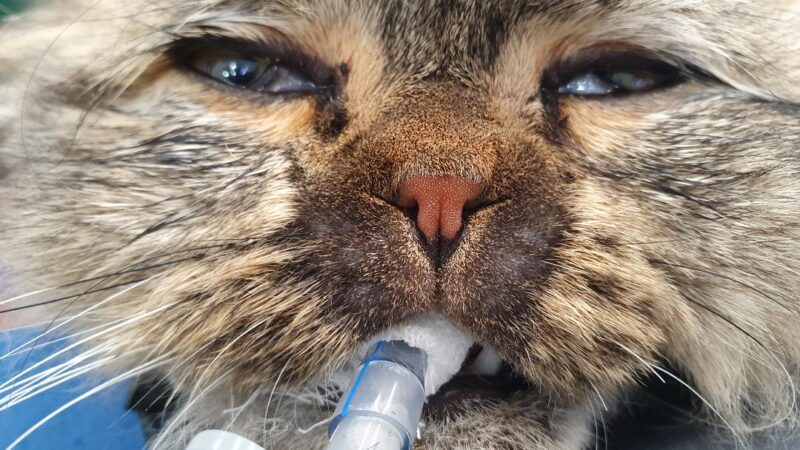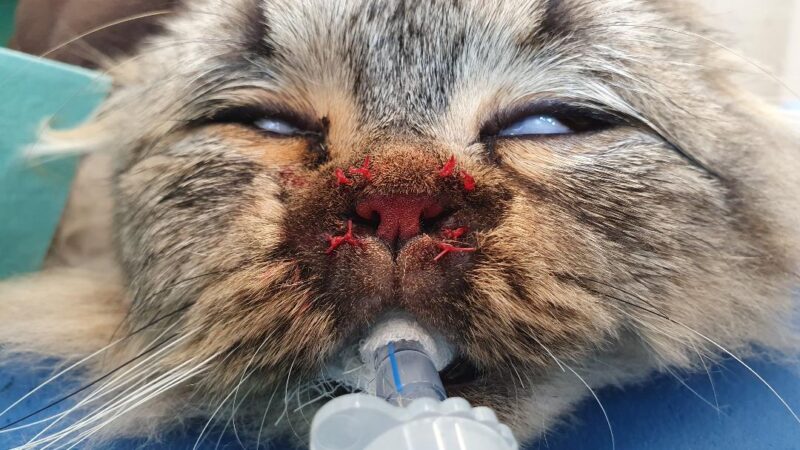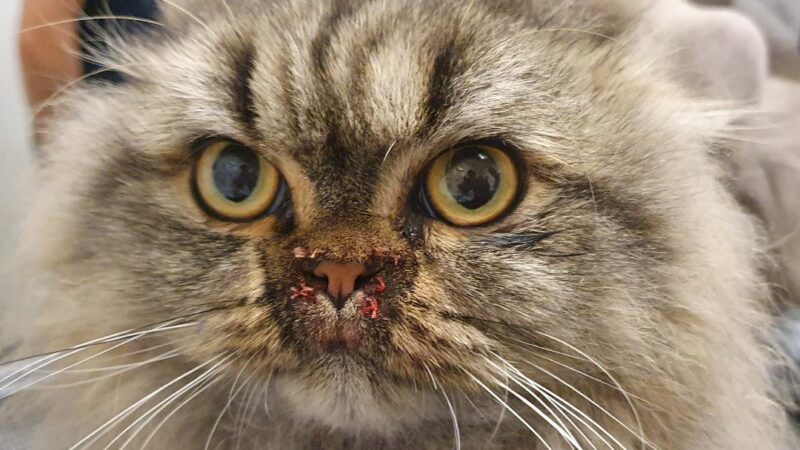Brachycephalic obstructive airway syndrome (BOAS) is a chronic respiratory condition that arises as a consequence of selective breeding for a changed skull shape primarily characterised by a shortened muzzle.
Anatomical abnormalities associated with the brachycephalic conformation were first reported in dogs in 1957.
However, little work has focussed on brachycephalic cats and associated health problems.
As a result of this disparity it remains unclear whether BOAS manifests and impacts differently in cats as compared to dogs .
From the relatively scant literature addressing brachycephalism in cats, it has been demonstrated that selection for shorter skulls with reduced nasal bones is associated with an increased likelihood of the cats suffering from respiratory and other health problems
Brachycephalic cat breeds, including the Persian, Himalayan, Exotic Shorthair, Scottish Fold, and Burmese cats. have smaller nostrils and a flattened facial profile when compared to other feline breeds.
Unlike dogs, stenotic nares in cats is not usually associated with concurrent soft palate, laryngeal, or tracheal abnormalities and appears to be the predominant primary abnormality causing clinical respiratory signs. Also the elevated skin, rostral to the sulcus, is a contributing factor in feline brachycephalic stenotic nares.
The smaller anatomic features of the feline nares make brachycephalic cats particularly vulnerable to upper airway distress.
Affected cats will make some increased noise when they breathe, or they may snore when they are relaxed or sleeping. More severely affected cats have more pronounced upper respiratory noise, appear to tire easily with exertion, and may collapse or faint after playing or exercising. Other respiratory signs may be associated with brachycephalic cats including sneezing, coughing, nasal discharge, open mouth breathing.
Surgical correction of stenotic nares does provide notable improvement in breathing for brachycephalic cats as well as their cardiopulmonary and activity-related parameters.
Surgical procedures used to treat stenotic nares in brachycephalic cats include punch resection alaplasty, the use of a single advancement flap, ala vestibuloplasty (resection of the ala nasi or alar wings), small wedge resection, the use of the carbon dioxide laser to remove the lower portion of each alar fold, combined Alar Fold Lift-Up and Sulcus Pull-Down Techniques and Bilateral wedge resection of the dorsal lateral nasal cartilage.
References:
Farnworth MJ, Chen R, Packer RMA, Caney SMA, Gunn-Moore DA. Flat feline faces: is brachycephaly associated with respiratory abnormalities in the domestic cat (Felis catus)? PLoS One. 2016;11(8):e0161777. doi:10.1371/journal.pone.016177
Phillips H. Updates in upper respiratory surgery. Vet Clin North Am Small Anim Pract. 2022;52(2):339-368. doi:10.1016/j.cvsm.2021.12.002
Berns CN, Schmiedt CW, Dickerson VM, Murphy SM. Single pedicle advancement flap for treatment of feline stenotic nares: technique and results in five cases. J Feline Med Surg. 2020;22(12):1238-1242. doi:10.1177/1098612X20910539
Gleason HE, Phillips H, Fries R, Keating S, Hamel P, McCoy A. Ala vestibuloplasty improves cardiopulmonary and activity-related parameters in brachycephalic cats. Vet Surg. 2023;vsu.13948; Epub ahead of print. doi:10.1111/vsu.13948
Harvey CE. Surgical correction of stenotic nares in a cat. J Am Anim Hosp Assoc. 1986;22:31-32.
Successful correction of stenotic nares using combined Alar Fold Lift-Up and Sulcus Pull-Down Techniques in brachycephalic cats: 8 cases (2017-2022).
Pavletic MM, Trout NJ.J Am Vet Med Assoc. 2023 Apr 26;261(9):1-5. doi: 10.2460/javma.23.01.0054. Print 2023 Sep 1.PMID: 37116881
A novel surgical approach for feline stenotic nares: Bilateral wedge resection of the dorsal lateral nasal cartilage in seven cases.
Chen YC, Chang YS.Vet Med Sci. 2023 Oct 16. doi: 10.1002/vms3.1302. Online ahead of print.



